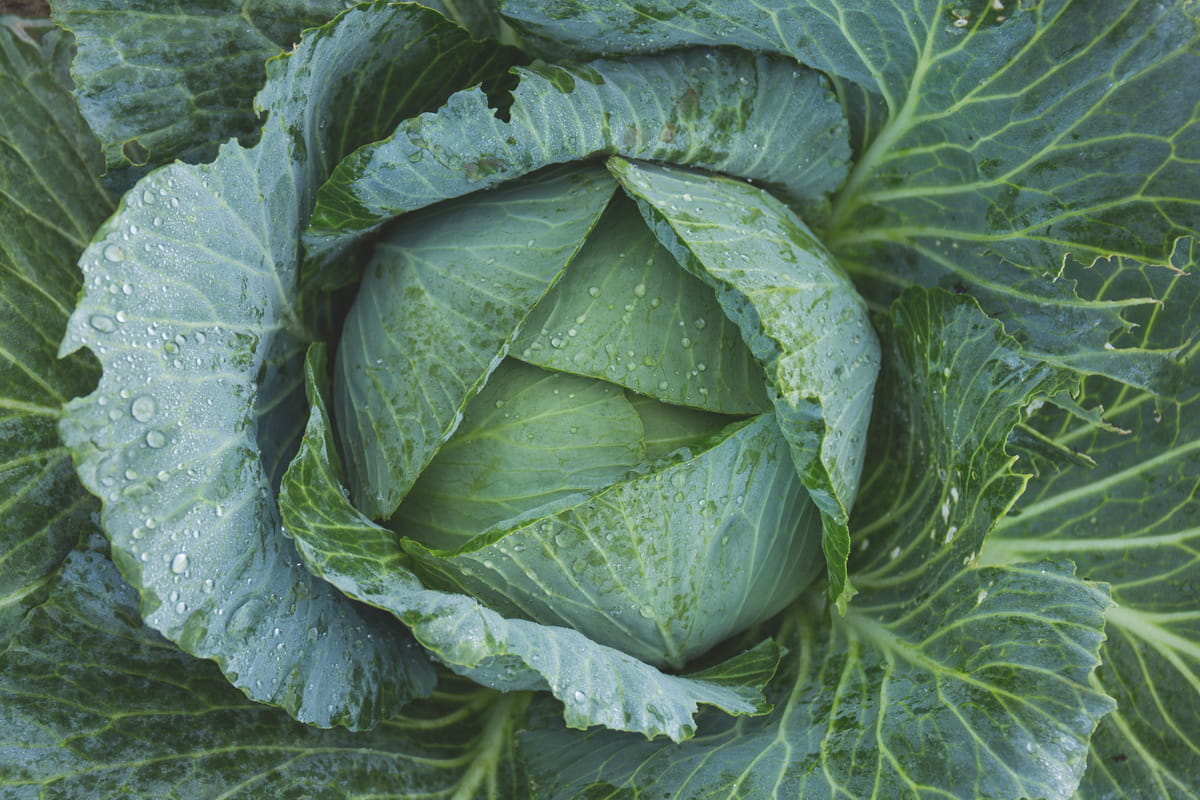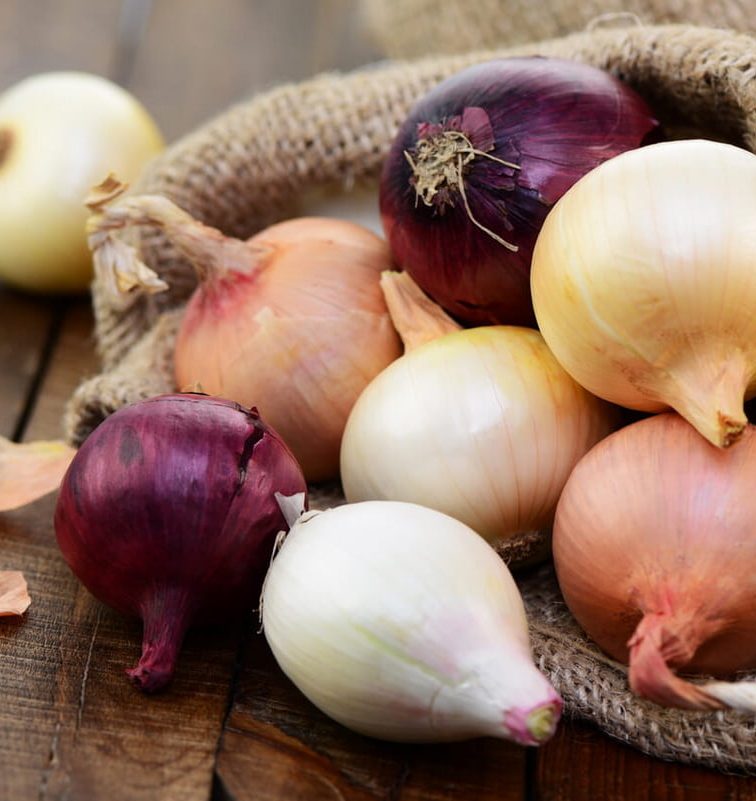Cabbage, a leafy green of ancient renown, is more than just a staple in stews and salads. It’s a cruciferous marvel that dates back to the days of the Celts, around 1000 BCE, where it served as both food and medicine.
Fast forward to the Middle Ages, this hearty vegetable was used by monks in their scripts for its antiscorpionic properties. With each serving of cabbage, we’re consuming centuries of history and nutrition favored by emperors and peasants alike.
As we explore the cabbage fun facts, we unearth its vibrant journey from past to present, revealing how this vegetable has influenced diets, economies, and cultures across the globe.
1. The Global Journey of Cabbage: A Veggie Passport
The humble cabbage has been a globetrotter since its domestication in Europe before 1000 BC. It was revered in Ancient Greece for its digestive properties, and by the time of the Roman Empire, it was a dietary cornerstone, featured prominently in the writings of Cato the Elder in 160 BC. The global trek didn’t stop there; by the 16th century, explorers like Jacques Cartier introduced cabbage to the Americas, and it has since become a worldwide culinary phenomenon.
But it’s not just the spread of cabbage that’s noteworthy—it’s the adaptations. From the crinkled leaves of savoy to the smooth, round Dutch white cabbages, this plant has diversified into a spectrum of shapes and flavors to suit different climates and tastes.
2. Cabbage Through the Ages: A Historical Digest
Cabbage has been a dietary constant through the ages. Archaeological evidence suggests that the Celts introduced cabbage to Europe around 600 BC, where it became a fixture in Greek and Roman diets. In 1536, the physician to the French king wrote extensively about cabbage, claiming it could cure everything from gout to deafness.
During the Age of Exploration, cabbage became a life-saving commodity against scurvy for sailors on long voyages. By the 18th century, it was entrenched in European cuisine, with famous botanist Carl Linnaeus in 1753 noting its varieties in his seminal work, “Species Plantarum.”
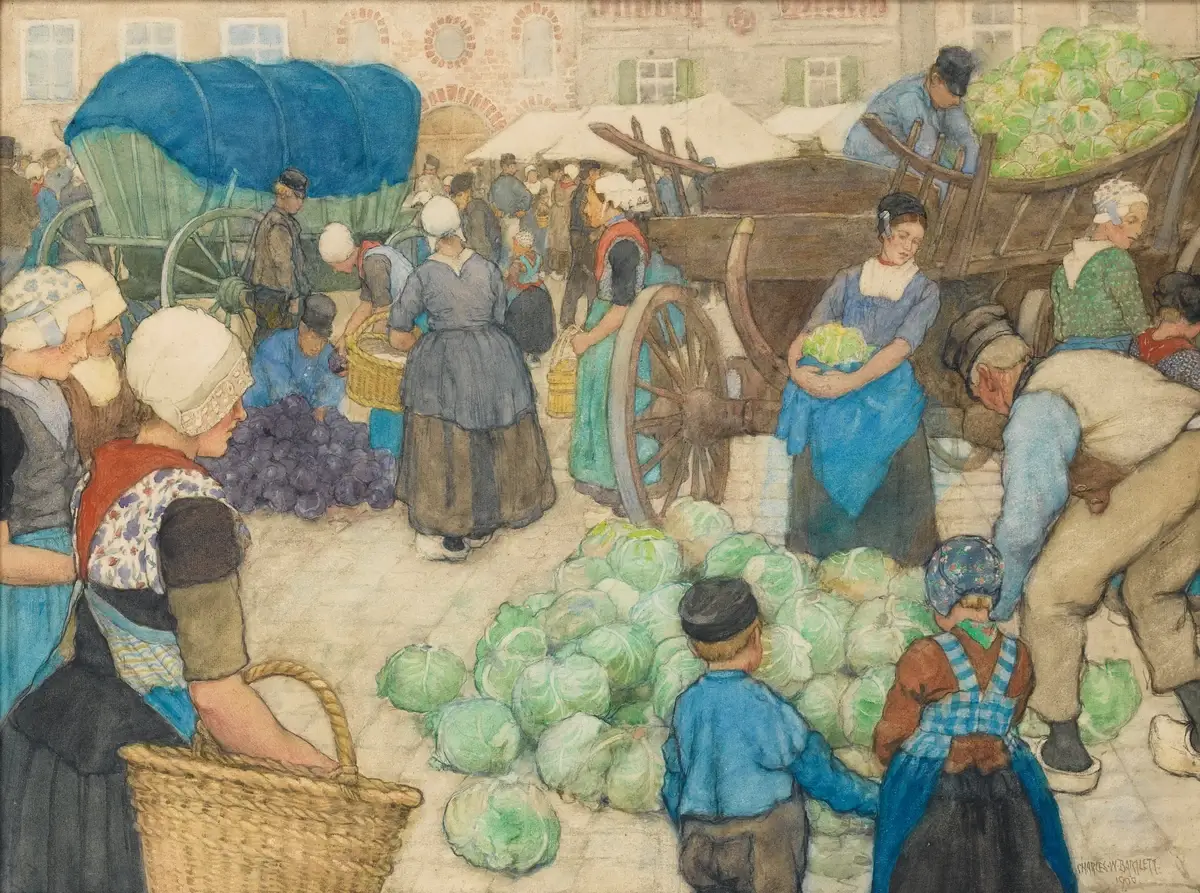
Image: Wikimedia Commons
3. Vitamin Powerhouse: Cabbage’s Nutritional Profile
Cabbage shines in its nutritional prowess. Rich in vitamin C, a single cup can provide more than half of the recommended daily intake, outshining oranges. It’s a treasure trove of vitamin K too, vital for blood clotting and bone health. The fact that it’s filled with fiber makes it a digestive aid, and its sulforaphane content, a compound lauded for its anti-cancer potential, adds to its reputation as a superfood.
Researchers continue to unveil the benefits of cabbage, finding that its antioxidants can help combat inflammation and reduce the risk of chronic diseases. This leafy giant, once a simple side dish, now stands tall as a pillar of healthful eating.
4. Cabbage in Folklore: Myths and Meanings
Cabbage holds a special place in folklore, symbolizing prosperity and protection. In ancient China, it was common to place cabbage figurines in households to invite wealth and good fortune. Going west, to Russia, cabbage is found in proverbs and fairy tales, often representing a simple solution to complex problems.
The vegetable also plays a role in love divinations across various cultures. An English tradition suggested that if a girl placed a cabbage stalk under her pillow, she would dream of her future husband. Such tales reflect the vegetable’s integration into the fabric of society, transcending its status as mere sustenance.
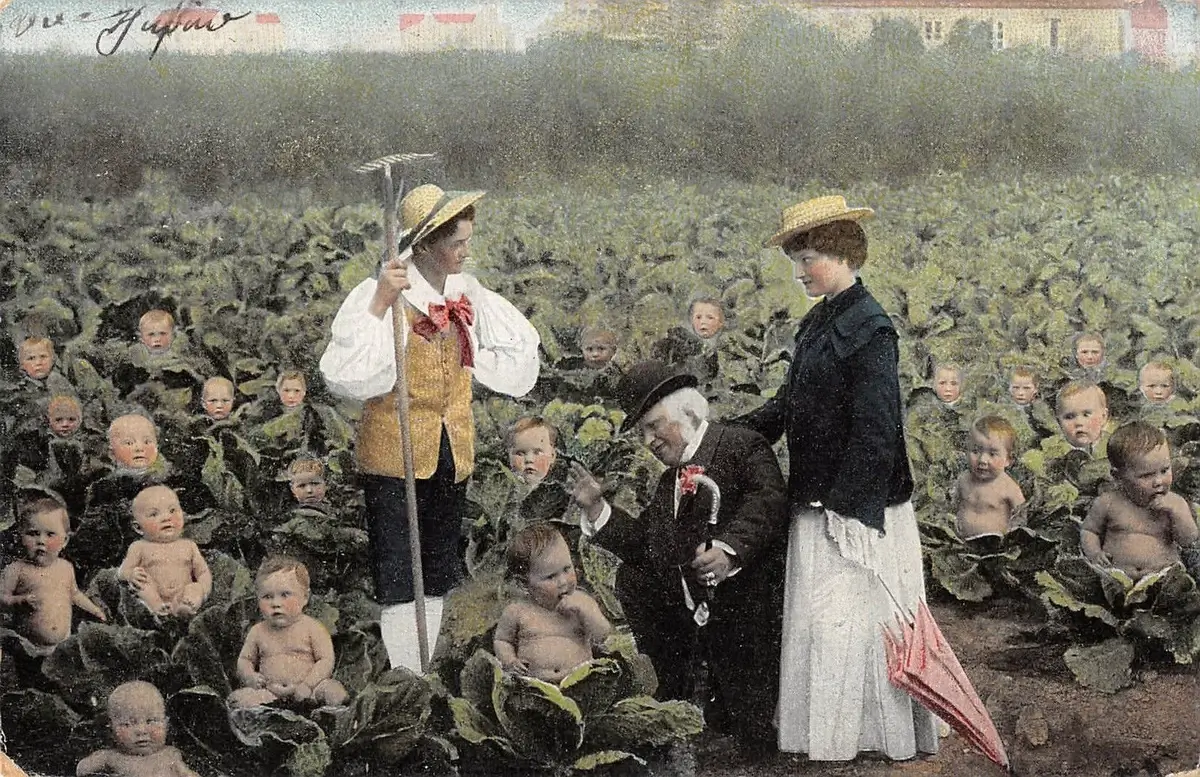
Children are found in cabbages. Image: marylmartin.com
5. Cruciferous King: Cabbage’s Royal Family Ties
Cabbage is part of the Brassica family, which includes broccoli, kale, and Brussels sprouts, earning it the title of Cruciferous King due to its wide-reaching influence. Its lineage can be traced back to the Sumerians and ancient Egyptians, but it was during the 5th century BC that Theophrastus, a Greek philosopher, made the first recorded mention of the vegetable as a food source.
In the royal courts of Europe, cabbage was as much a staple as it was for the common folk, believed to be a cure-all for many ailments. King Louis XI of France preferred cabbage over other vegetables, thinking it would keep him healthy against the advice of his doctors.
6. Cabbage in Wars: An Unexpected Ally
Cabbage has unexpectedly played its part in the theater of war. During World War II, cabbages were planted in Victory Gardens across the United States and United Kingdom, not only as a food resource but also as a symbol of resilience and unity. In the trenches of the First World War, it was used as a makeshift bandage for wounds due to its antiseptic properties.
What’s less known is that during the Siege of Paris in 1870, with food scarce, Parisians resorted to inventing dishes like “choucroute de la Commune,” a form of sauerkraut made from cabbage that became a symbol of the city’s enduring spirit in the face of adversity.
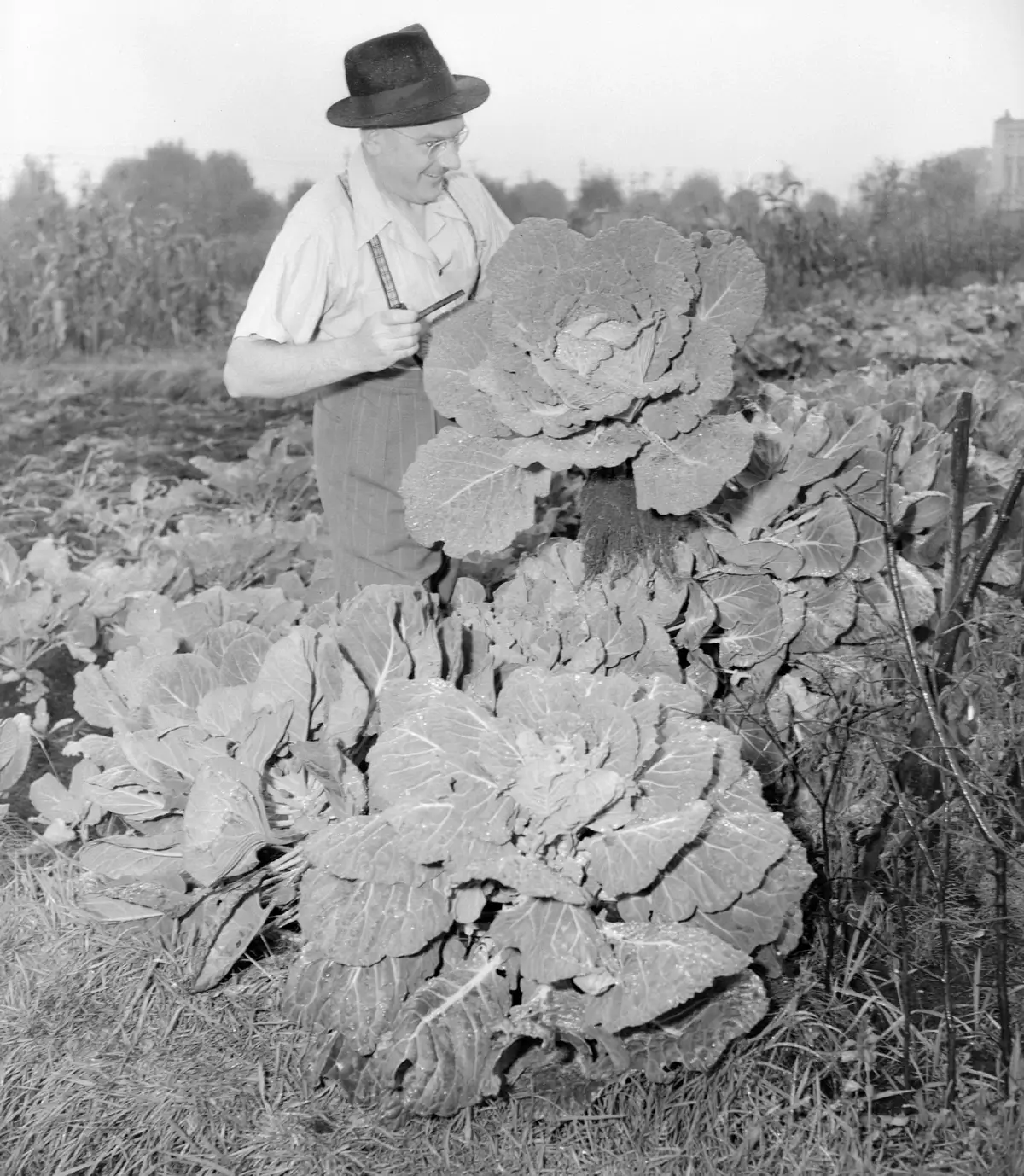
Image: thecanadianencyclopedia.ca
7. The Science Behind Cabbage’s Crunch
The satisfying crunch of cabbage is thanks to its cellular structure, packed with water held tightly in rigid cell walls. When we bite into cabbage, we’re actually breaking these cells, releasing the water and creating that characteristic sound. But there’s more to this crunch than acoustics; it’s also a sign of freshness and high nutritional value, as wilted cabbage loses its turgidity and, consequently, its crunch.
Scientifically speaking, cabbage’s crispness is also due to its high glucosinolate content, compounds that play a defensive role in the plant’s survival, deterring pests with their bitter taste and contributing to the firmness of the leaves.
8. Cabbage Varieties: More Than Just Green
When it comes to cabbage, the variety is truly the spice of life. There are over 400 different types of cabbage, ranging from the deep purple of red cabbage to the pale hue of the Dutch white. Each variety has its own unique flavor and texture, from the delicate, almost sweet leaves of bok choy to the robust, peppery bite of Savoy.
This vegetable’s diversity is a result of centuries of cultivation and breeding, with different regions favoring certain traits for their climate and cuisine. For instance, the crinkled leaves of Savoy cabbage, which originated in Italy, are perfect for trapping flavorful dressings in their grooves.
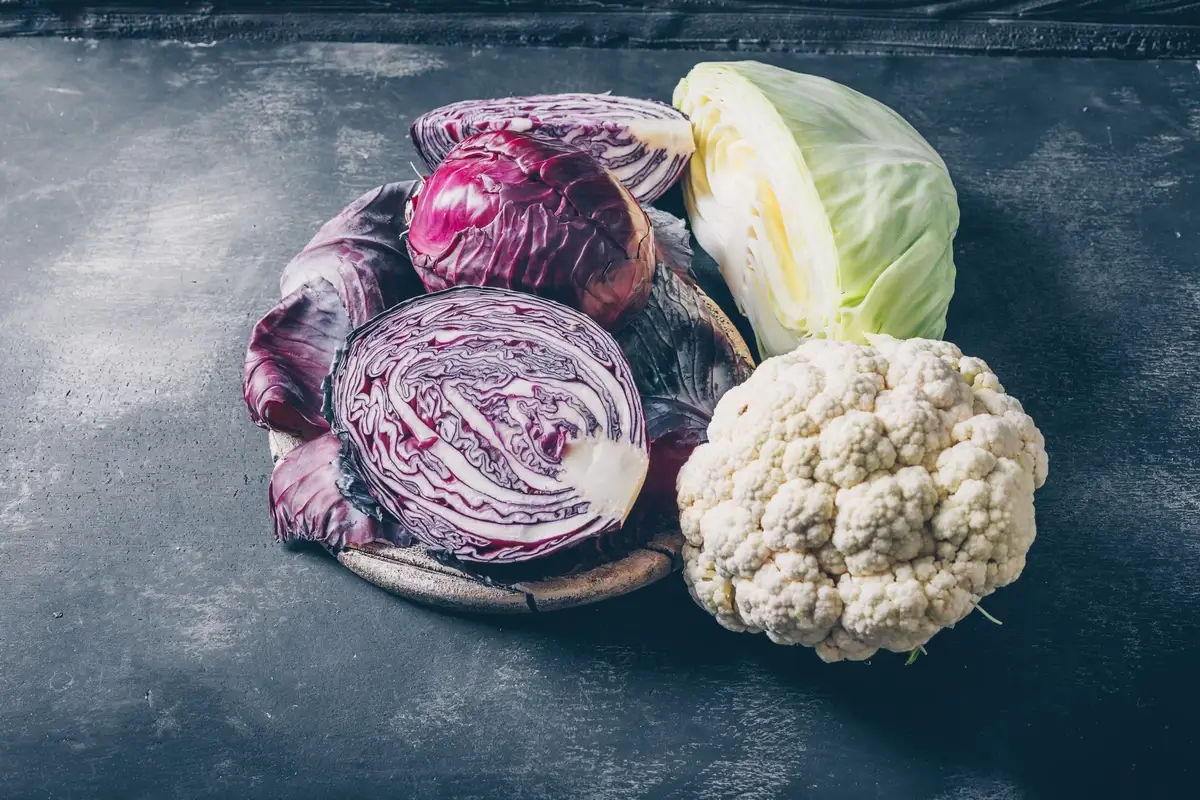
Image by 8photo / Freepik
9. Cabbage as Medicine: Ancient Healing to Modern Science
Long before it was a staple on our plates, cabbage was valued for its medicinal properties. Ancient Greek physicians like Hippocrates prescribed cabbage or cabbage juice for various ailments, including relief from joint pain. In the 1st century AD, Pliny the Elder cited cabbage as a cure for 87 different diseases.
Modern science has validated some of these ancient beliefs, discovering that cabbage contains compounds like sinigrin, which may have anti-inflammatory effects. Its high vitamin C content also makes it a potent antioxidant, which can help reduce the risk of chronic diseases and promote overall health.
10. Cabbage in Cuisine: A Global Culinary Star
Cabbage has taken center stage in dishes around the world, proving its versatility across a myriad of culinary traditions. In Poland, cabbage is the soul of dishes like pierogi and bigos, while in Mexico, it adds crunch to tacos. Korean kimchi, German sauerkraut, and Irish colcannon are just a few examples of cabbage’s global culinary influence.
Each culture has harnessed the unique textures and flavors of cabbage to create dishes that are not only delicious but also a reflection of their culinary heritage. This vegetable’s adaptability in the kitchen has secured its status as a global star, with each recipe telling a story of place and tradition.
11. Fermentation Fascination: Cabbage’s Transformation
Cabbage undergoes a remarkable transformation when fermented, becoming a food with enhanced flavor and nutritional benefits. The process of lacto-fermentation, where sugars are converted into lactic acid by bacteria, not only preserves the cabbage but also creates probiotics known for gut health. Sauerkraut and kimchi are prime examples of this age-old preservation technique that dates back to 4th century China, making cabbage a staple during times when fresh vegetables were scarce.
This transformative process has intrigued scientists and chefs alike, leading to a resurgence in fermented foods within health and culinary circles. The humble cabbage, through fermentation, becomes a complex, tangy delight that’s as beneficial for our health as it is for our taste buds.
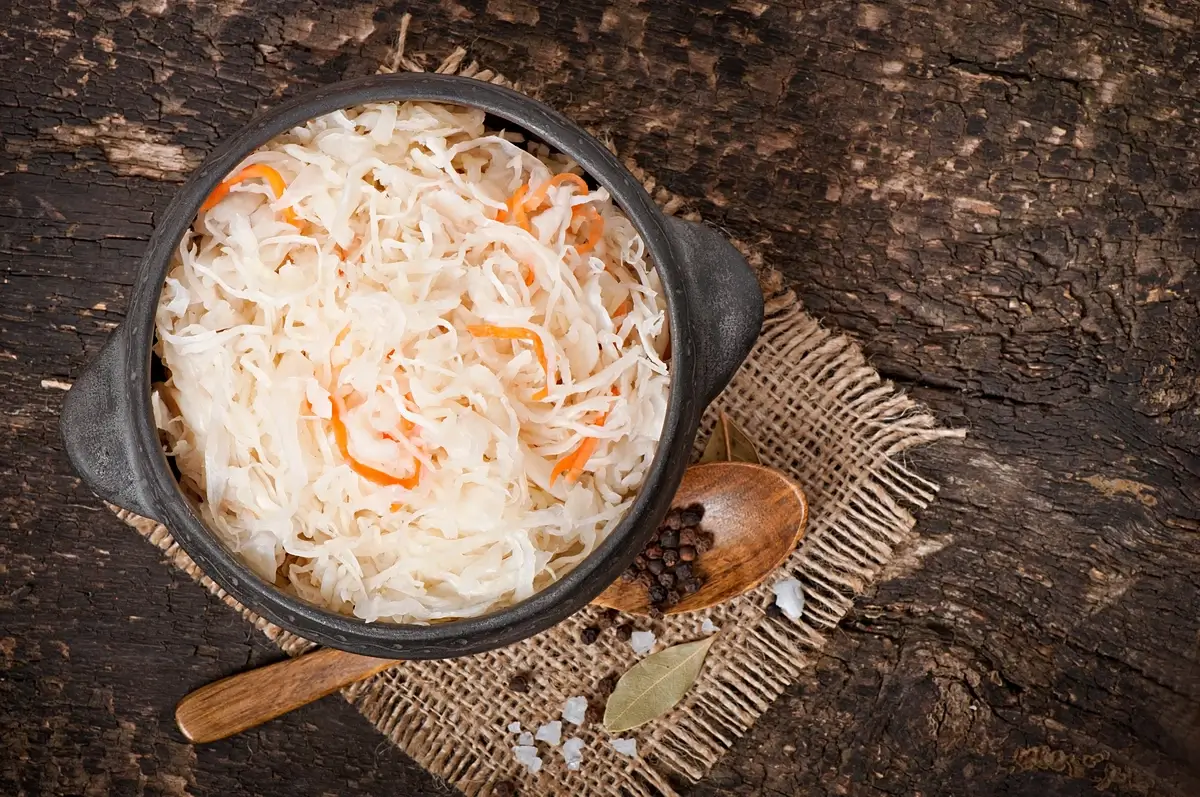
Sauerkraut. Image by timolina / Freepik
12. Economic Leaf: Cabbage’s Role in Global Trade
Cabbage has a significant economic impact, cultivated in over 90 countries and on all continents except Antarctica. It ranks as the second most economically important vegetable worldwide, after tomatoes. In 2018, China led global production with a staggering 33 million tonnes. The crop’s robustness, long shelf life, and nutritional density contribute to its economic viability, making it a valuable export for countries like Russia, South Korea, and Poland.
The global cabbage trade has deep historical roots, with records of cabbage markets in ancient Rome. Today, it remains a heavyweight in the agricultural sector, proving that this economical leaf is a key player in feeding the world’s population.
13. Cabbage in Art and Culture: A Leafy Muse
Cabbage has left its imprint on art and culture, symbolizing simplicity and frugality. Dutch and Flemish painters of the 16th and 17th centuries, like Joachim Beuckelaer, often featured cabbages in their still-life works to represent humility and abundance. In literature, Tolstoy’s “Anna Karenina” mentions cabbage soup as a comfort dish, reflecting the vegetable’s cultural resonance in Russia.
In modern times, cabbage has inspired sculptures and public art installations, showcasing its form and cultural symbolism. Its presence in art over the centuries underscores not just its culinary importance but also its role as a muse, inspiring creativity and reflection.
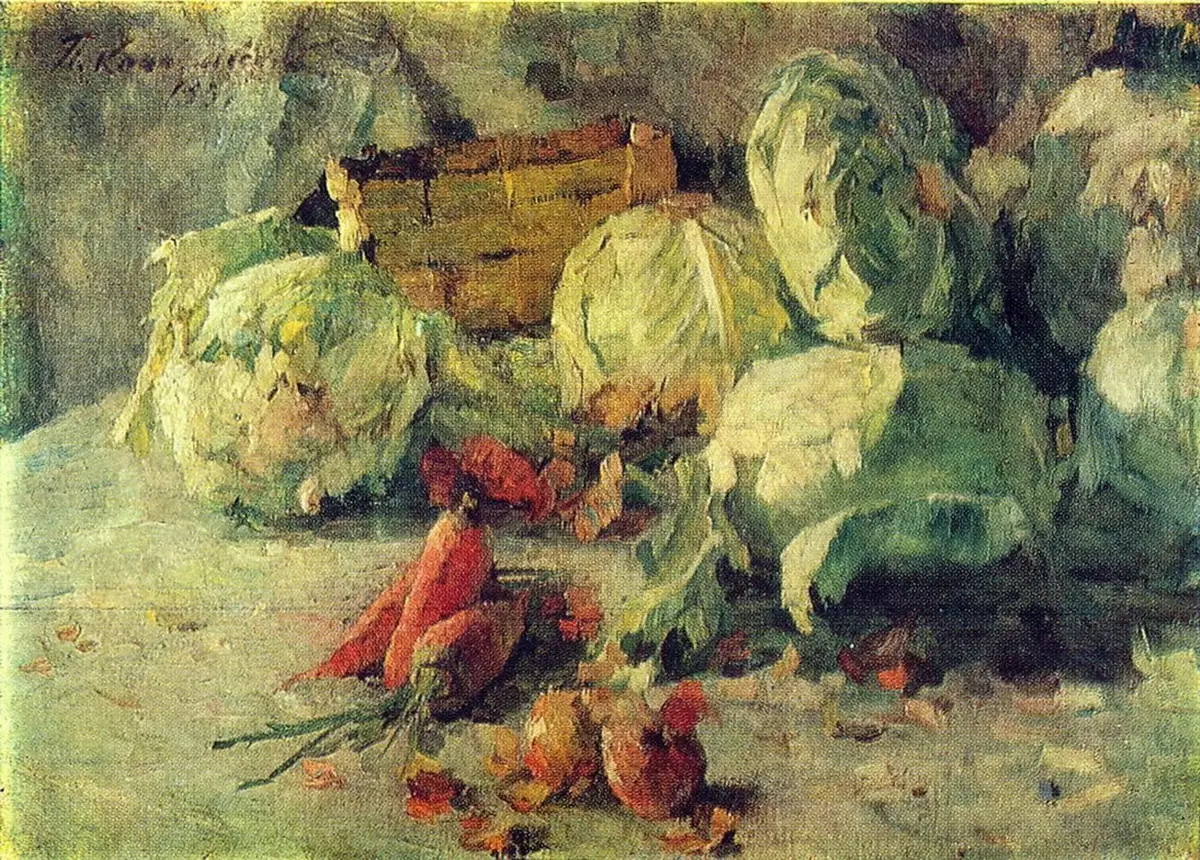
Image: arthive.com
14. The Bizarre Side of Cabbage: Odd Facts and Uses
Cabbage has its share of quirky trivia. In the 19th century, ‘cabbage-head’ was slang for a person with little common sense, while in Japan, the expression ‘kyabetsu-taro’ refers to someone who is unskilled but tries hard. Beyond language, cabbage has found its way into unusual uses, such as being a component in biofuels and renewable energy research due to its high biomass.
Perhaps the most peculiar of all, during the Middle Ages, it was believed that cabbages could grow in the gardens of people who had not been baptized. Whether in folklore or science, cabbage certainly has some unexpected stories folded within its leaves.
15. Gardening Glory: Growing Cabbage Successfully
Cultivating cabbage is a gardener’s delight due to its hardiness and the reward of harvesting a homegrown head. To grow cabbage successfully, timing is essential; it thrives in cool temperatures and can be planted in early spring or late summer. Rich soil, consistent moisture, and attention to pests like the cabbage looper are the keys to a bountiful crop.
Gardeners often use companion planting, growing herbs like thyme or mint nearby to deter cabbage pests naturally. The joy of harvesting your own cabbage is matched by the benefits it brings to the garden, such as its role in crop rotation, improving soil health for the next season’s plants.
16. Cabbage and Culture: A Symbol in Celebrations
Cabbage isn’t just for the dinner table; it has a place in celebrations, too. In the American South, eating cabbage on New Year’s Day is considered good luck, symbolizing prosperity. In parts of Germany, a tradition involves newlyweds chopping a cabbage together, which is thought to bring blessings and a strong marriage due to the vegetable’s hardy nature.
These customs highlight cabbage’s symbolic value in cultural rituals, embodying hope, resilience, and community. From ancient Roman feasts to contemporary festivals, cabbage continues to be a symbol of good fortune and unity, a leafy green bringing people together in celebration.
17. The Future of Cabbage: Trends and Innovations
The future of cabbage looks as promising as its past is storied. Current trends in agriculture, such as vertical farming and hydroponics, are making it possible to grow cabbages in urban settings, maximizing space and conserving water. Innovations in food science have also led to new cabbage-derived products, like cabbage-based probiotic drinks, tapping into the health food market.
Moreover, genetic research is delving into cabbage’s robust genome to develop disease-resistant and climate-tolerant varieties, ensuring that this ancient vegetable continues to adapt and thrive in a changing world. As we look forward, cabbage is set to remain a key player in both our diets and our discussions on sustainable agriculture.
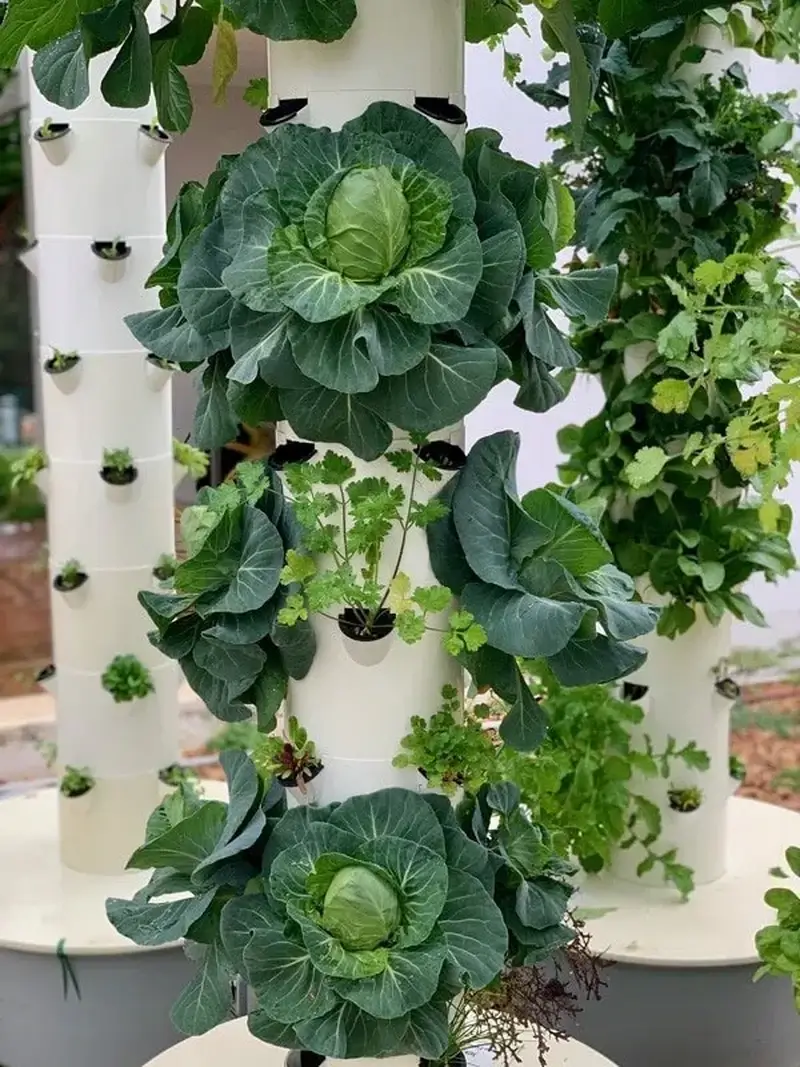
Image: agrotonomy.com
FAQ
How did cabbage get its name?
The name “cabbage” stems from the French word “caboche,” a term of endearment for “head” reflecting its round shape. The journey of the word through linguistic history is as rich as the vegetable itself, originating from the Latin “caput” for head and later becoming “capuccio” in Italian. Over time, the Old French language sculpted it into “caboche,” which the English language eventually adopted as “cabbage” in the 15th century.
What are the unique features of cabbage?
Cabbage is unique for its dense-leaved heads, which are produced by tightly wrapped leaves in spherical or elongated shapes. This leafy vegetable is known for its hearty texture and the ability to last longer than many other vegetables when stored correctly, making it a staple throughout the year. Its layers are a natural preserve of vitamins and minerals, and it has a remarkable ability to be both a culinary chameleon and a medicinal plant used historically for a variety of health conditions.
What color is cabbage?
Cabbage manifests in a spectrum of colors ranging from the classic deep green to purplish-red hues and even pale yellow or whitish shades. The most common green cabbages have a jade-like glow, while red cabbages boast a vibrant ruby color, and both may have slightly different flavors and nutrient profiles. The variety in color is due to varying levels of anthocyanins in red cabbage and chlorophyll in green cabbage.
What pests destroy the cabbage crop?
Several pests pose threats to cabbage crops, including aphids, flea beetles, and cutworms. The cabbage looper and the imported cabbageworm are notorious for causing extensive damage to cabbage leaves by creating irregular holes. Root maggots can also be detrimental, attacking the roots and stunting the growth of the plant. Farmers and gardeners often employ integrated pest management strategies to protect their cabbage crops.
What culture eats the most cabbage?
While cabbage is eaten worldwide, it is a significant part of many East European and Asian diets. Countries like Russia, Ukraine, and Poland have a high intake of cabbage, where it is a central ingredient in traditional dishes such as borscht and pierogi. In Asia, China and Korea are notable for their high consumption, where cabbage is often fermented to create kimchi or used in stir-fries and soups.
What types of cabbage are there?
There is a wide variety of cabbage types, each with its own texture, flavor, and culinary use. Some of the well-known varieties include the green cabbage, red cabbage, Savoy cabbage, and Napa cabbage. Bok choy and Brussels sprouts are also part of the cabbage family, albeit less traditional in form. Each type varies from the others in leaf texture, flavor profile, and preferred culinary applications.
Why is cabbage a superfood?
Cabbage is considered a superfood due to its dense nutrient content and health benefits. It is packed with vitamins C and K, and it is high in fiber, which aids in digestion and maintains a healthy gut. Cabbage also contains antioxidants such as sulforaphane and kaempferol, which have shown potential in cancer prevention. Its low calorie count, coupled with a wealth of nutrients, makes cabbage a powerful addition to a health-conscious diet.


